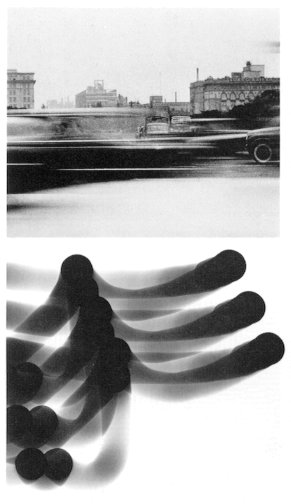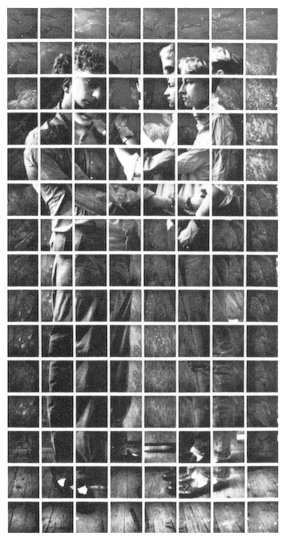|
(2) Deviation, movement, and repetition of shapes There is a work entitled "Dynamic Development and Speed" by Giacomo Balla, an Italian Futurist. It expresses a violent movement like wheels of a train running at a great speed using repetitions of circular arcs and lines. People in the futurism insisted that you had to throw away all of the old-fashioned ways belonging to the past to survive in the age of machinery positively and robustly. Furthermore, they insisted that art which was suitable for this dynamic present age when significant changes would continue had to express feelings of dynamic movement and power. Therefore, various expression techniques such as the effective use of repeated shapes as well as the shading of brush lines and the effective use of oblique lines have been investigated and applied. Marcel Duchamp, when he participated in Olfism, expressed movement using expression techniques of the futurism style as known from his work of "Naked Woman Stepping Down Stairs". Photography also provides unique expression skills of movement by camera and darkroom works. The feeling of movement can be expressed by moving a camera or a piece of photographic paper during exposure without moving the object because the movement is relative (Fig. 473). Figure 474 is a work which was made by taking many
photographs by a Polaroid camera and by pasting these photographs on a
surface. The part where the human moved most is deviated and shifted, and
the feeling of movement is most strongly expressed around that part.
|

